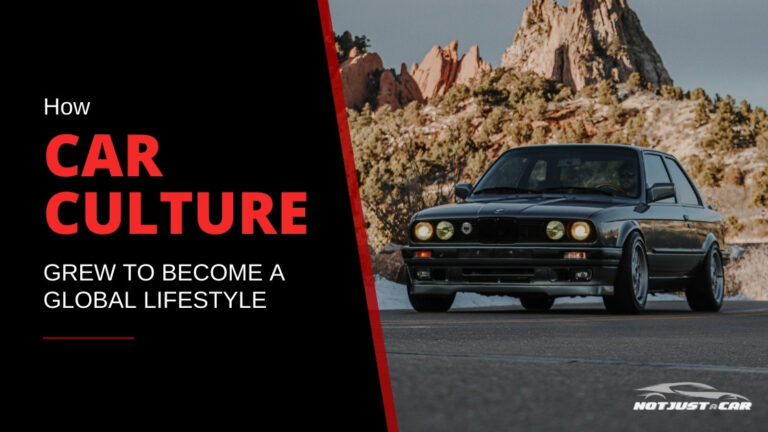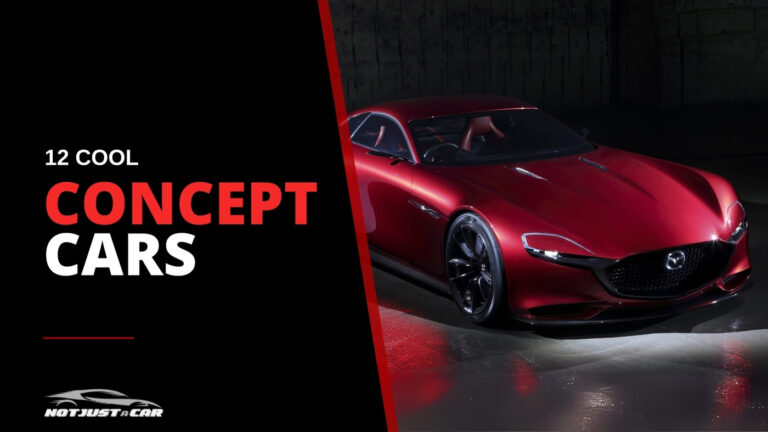The Coolest and Best 15 Cars of the 90s
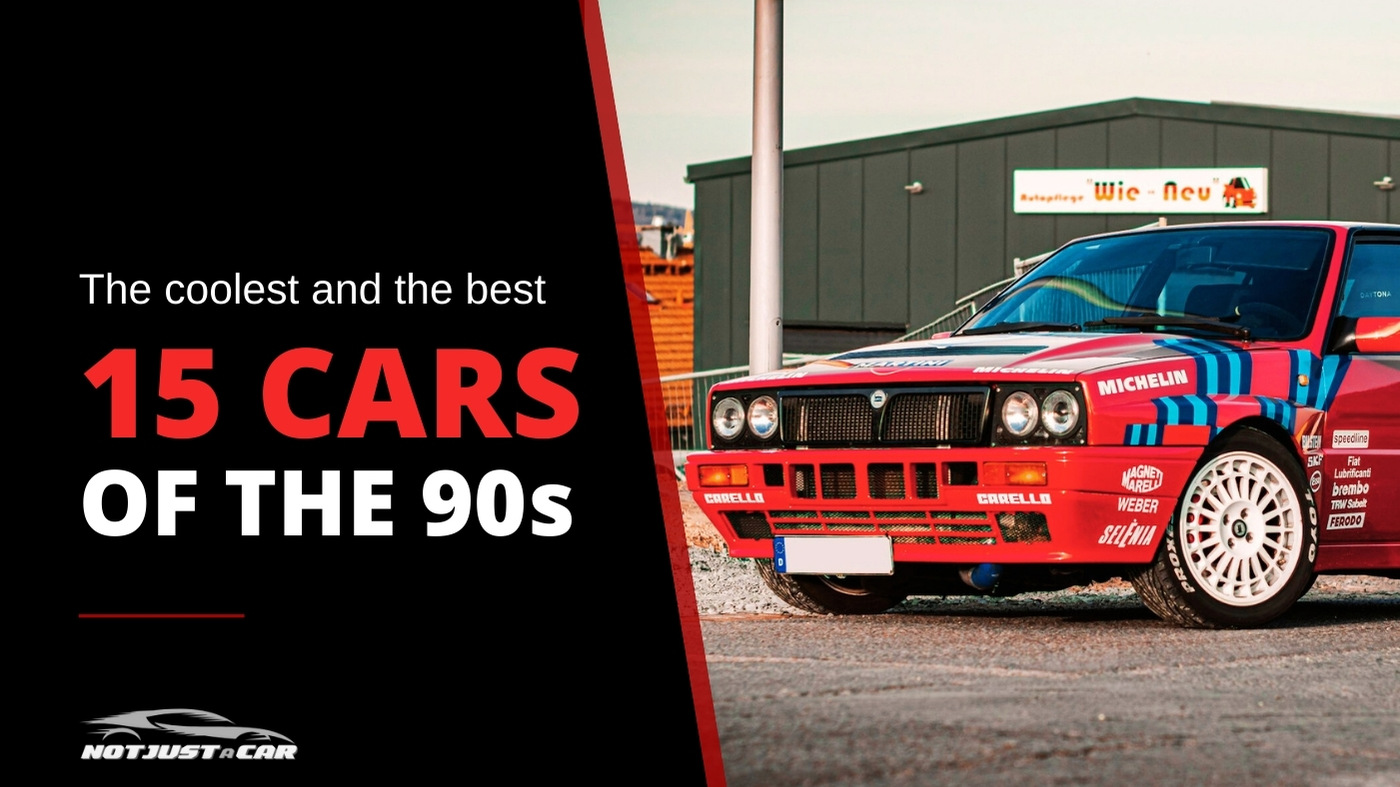
A bit of a nostalgia article, but let’s check out some of the coolest and best cars of the 1990s.
Before you get mad that some of these don’t deserve to be here (I mean, I don’t see a reason why not, some are even overrated tbh), or that some of your favorites aren’t listed, just keep in mind that these are just my opinions.
So… let’s get started with my all time favorite:
Quick Links
1. BMW E30 M3
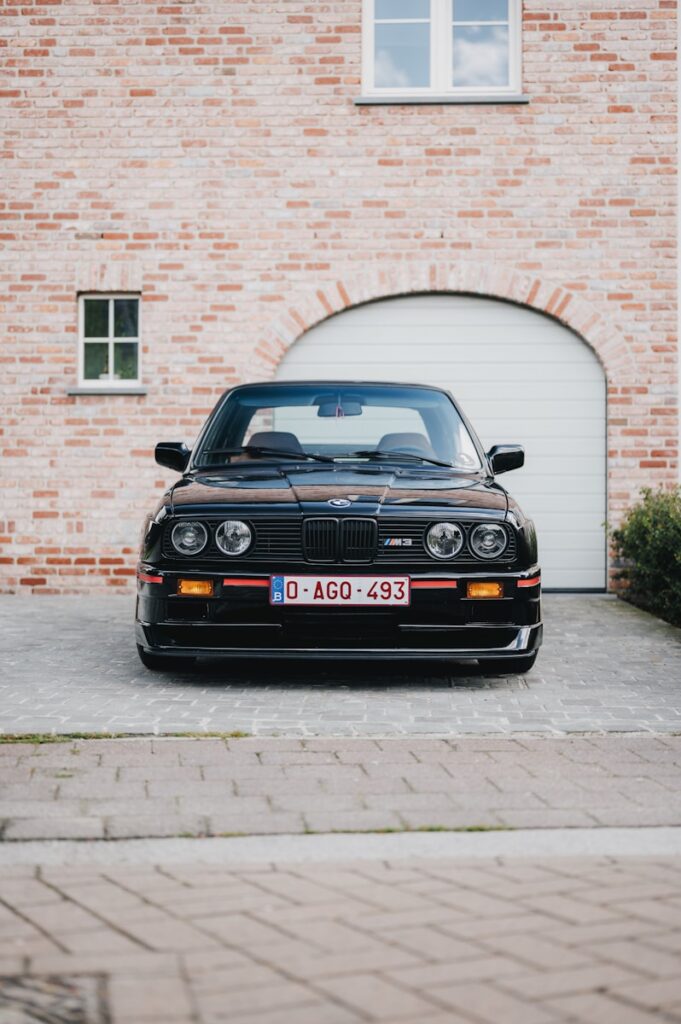
Where do I even start with this one? The E30 M3 is pure automotive perfection on wheels. Born for motorsport homologation, this thing dominated touring car championships throughout Europe with that screaming S14 four-cylinder engine. Unlike today’s M cars that hide their racing DNA under luxury features, the E30 M3 was completely unapologetic about its track-focused nature.
Those box flares, the aggressive stance, and that iconic rear wing aren’t just for show – they’re functional pieces of motorsport art.
What makes it truly special is how analog and connected it feels; no electronic nannies, just you, a manual gearbox, and one of the best-handling chassis ever created.
Prices have gone absolutely insane in recent years, and honestly? They deserve to. They simply don’t make them like this anymore.
2. Audi RS2
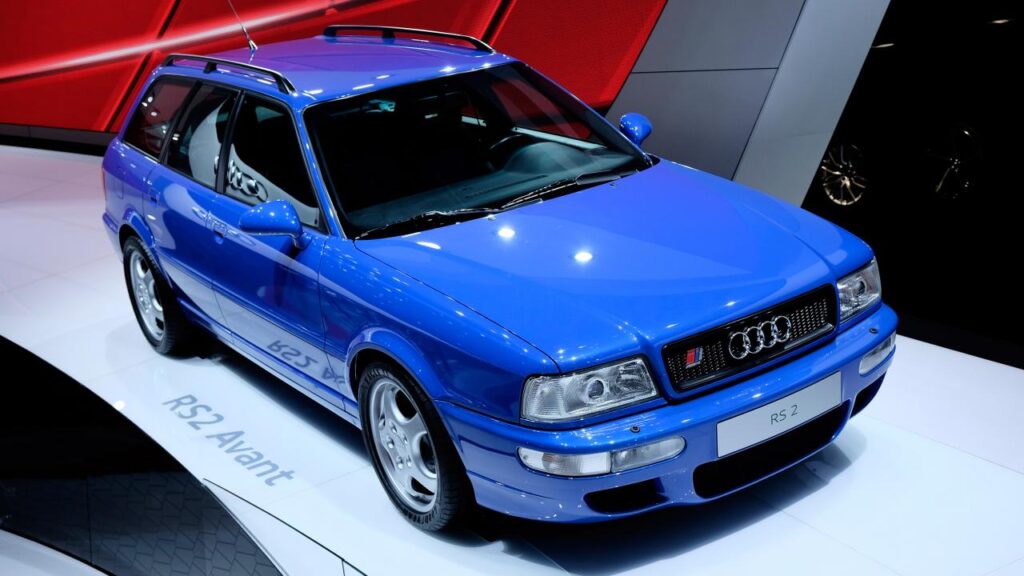
Before AMGs and M cars became common sights in suburban driveways, Audi collaborated with Porsche to create what might be the first true super wagon. The RS2 Avant was automotive lunacy in the best possible way.
Porsche-tuned with 911 brakes, wheels, and mirrors, this family hauler could sprint to 30 mph faster than a McLaren F1 (seriously, look it up). Its turbocharged five-cylinder produced sounds that still give me goosebumps.
With Quattro all-wheel drive and that signature Nogaro Blue paint, the RS2 wasn’t just fast – it was the blueprint for every high-performance wagon that followed.
The coolest part? It was hand-built at Porsche’s Rossle-Bau plant in Zuffenhausen. Talk about pedigree.
Only about 2,900 were ever made, making this one of the rarest and most desirable Audis ever created.
3. Porsche 928
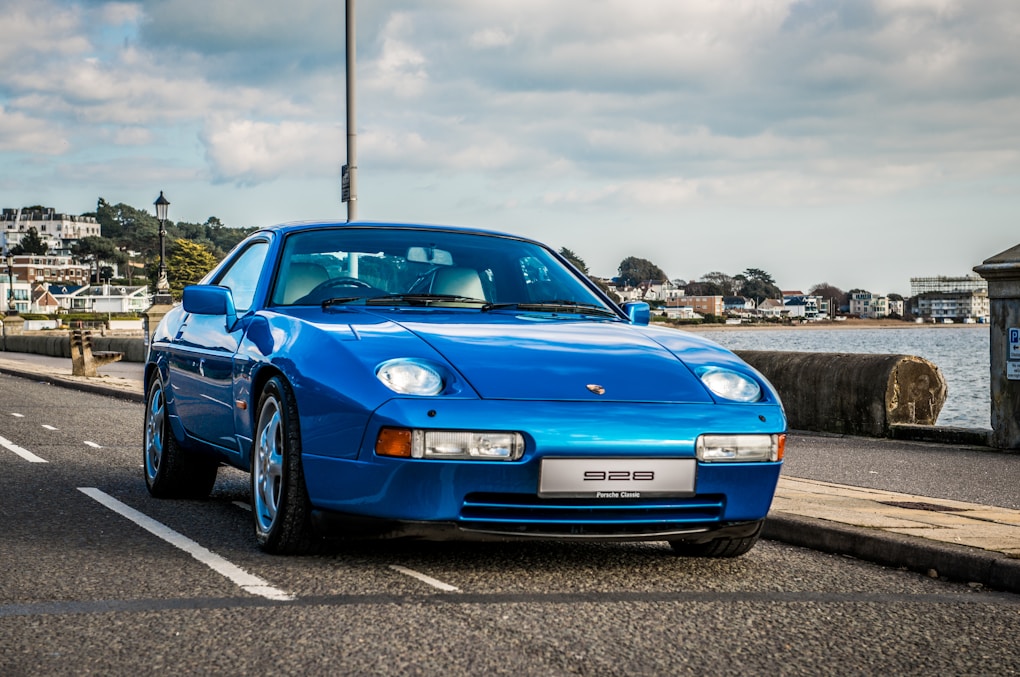
Yes, the 928 debuted in the late ’70s, but it reached its pinnacle in the ’90s with the GTS model.
This was Porsche’s attempt to create a grand tourer that would eventually replace the 911 (thank goodness that didn’t happen). With its sleek, futuristic design and pop-up headlights, the 928 still looks modern today.
What made it special was that front-mounted V8 – a complete departure from Porsche tradition – delivering smooth, muscular power perfect for cross-continental journeys. The transaxle layout gave it near-perfect weight distribution, and that interior?
Pure ’80s/’90s luxury with that weird egg-shaped dashboard and those incredibly comfortable seats.
The 928 was the car for the successful stockbroker who wanted something more distinctive than a Ferrari or a Jaguar.
It’s finally getting the recognition it deserves after years of being the “affordable Porsche” – prices for clean GTS models are absolutely skyrocketing now.
4. Alfa-Romeo GTV
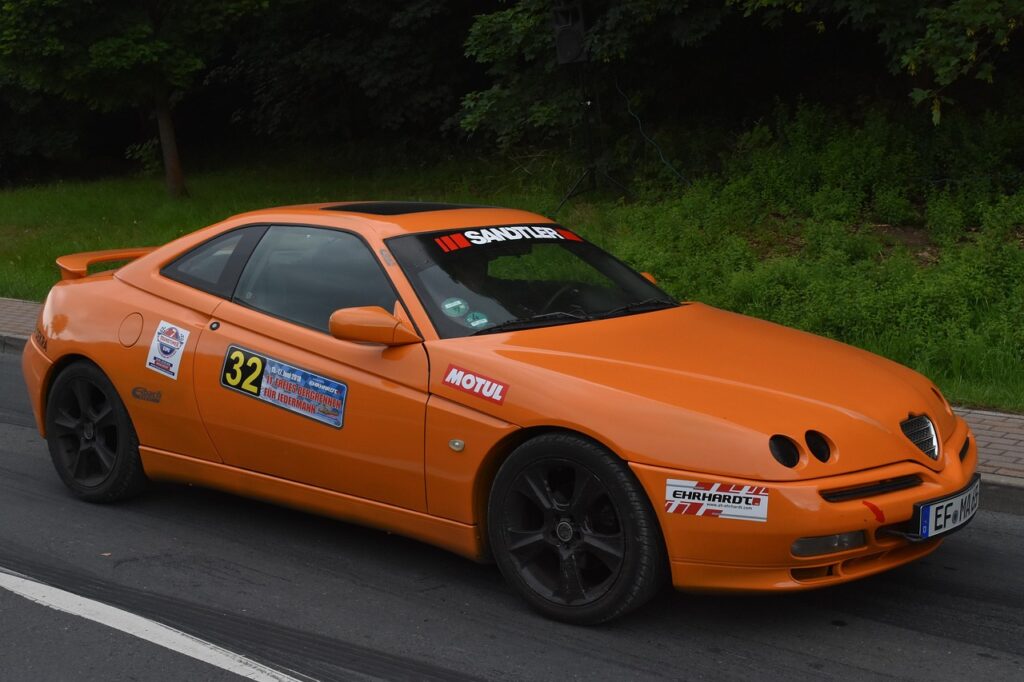
The GTV is quintessentially Italian – gorgeous to look at but temperamental to own (and I say that with love). Designed by Pininfarina, this wedge-shaped coupe had personality in spades with its distinctive front end and those quirky circular taillights.
The V6 versions, especially the 3.0 Busso V6, produced one of the most intoxicating engine notes ever created – like mechanical opera at full throttle. Sure, electrical gremlins were practically standard equipment, but that’s part of the charm of Alfa ownership!
The handling was sublime, with that perfect front-end bite that makes you feel like a hero in every corner. The interior was driver-focused with those deeply recessed gauges and typically Italian driving position. It’s a car that makes every journey feel special, even if you’re just popping out for milk. And unlike many cars from this era, it still turns heads whenever one drives by.
5. Nissan Skyline R34 GT-R
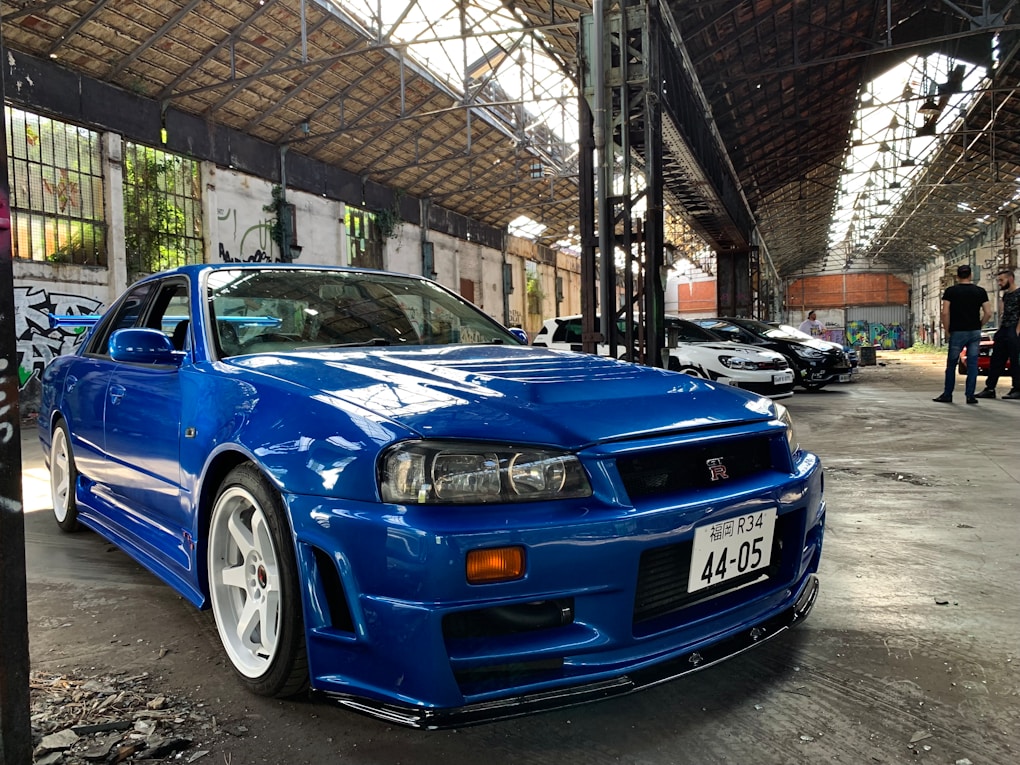
Before Fast & Furious made it a household name, the R34 GT-R was already legendary in Japan and among serious car enthusiasts. Nicknamed “Godzilla,” this technological tour de force was essentially a race car with license plates.
That RB26DETT twin-turbo straight-six could be tuned to absolutely ridiculous power levels, while the ATTESA E-TS all-wheel drive system and four-wheel steering made it handle like nothing else. But what really set the R34 apart was that multifunction display showing real-time performance data – it felt like driving a video game car in real life.
The aggressive styling with those iconic round taillights became instantly recognizable worldwide. Thanks to import restrictions, these were forbidden fruit in the US for years, making them even more desirable. Now that they’re finally becoming legal to import, prices have gone completely insane – but honestly, owning a piece of JDM royalty like this is worth every penny.
6. Lancia Delta Integrale EVO 2
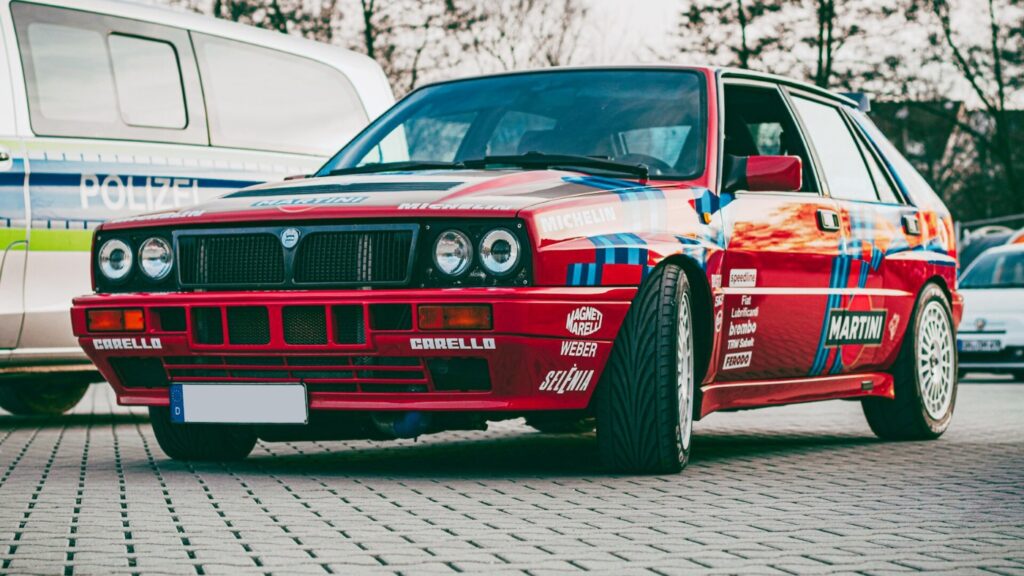
Rally fans know why this car is special – six consecutive World Rally Championship titles speak for themselves. The Delta Integrale took a humble family hatchback and transformed it into an absolute monster with flared arches, aggressive hood vents, and an adjustable rear wing. That permanent all-wheel-drive system was revolutionary, sending power to whichever wheels had the most grip, making it nearly unstoppable on any surface.
The EVO 2 was the ultimate evolution, with 215 hp from its turbocharged 2.0-liter engine – doesn’t sound like much today, but in the early ’90s, it was serious business. The interior was gloriously ’90s with those Recaro seats and that chunky steering wheel. What makes the Integrale EVO 2 truly special is its dual nature – practical enough for grocery runs but capable of tackling rally stages on the weekend. It’s the perfect expression of homologation specials from a time when manufacturers actually had to build road cars to go racing.
Sadly, Lancia’s glory days are long gone, making these cars even more precious.
7. Mitsubishi Evolution VI
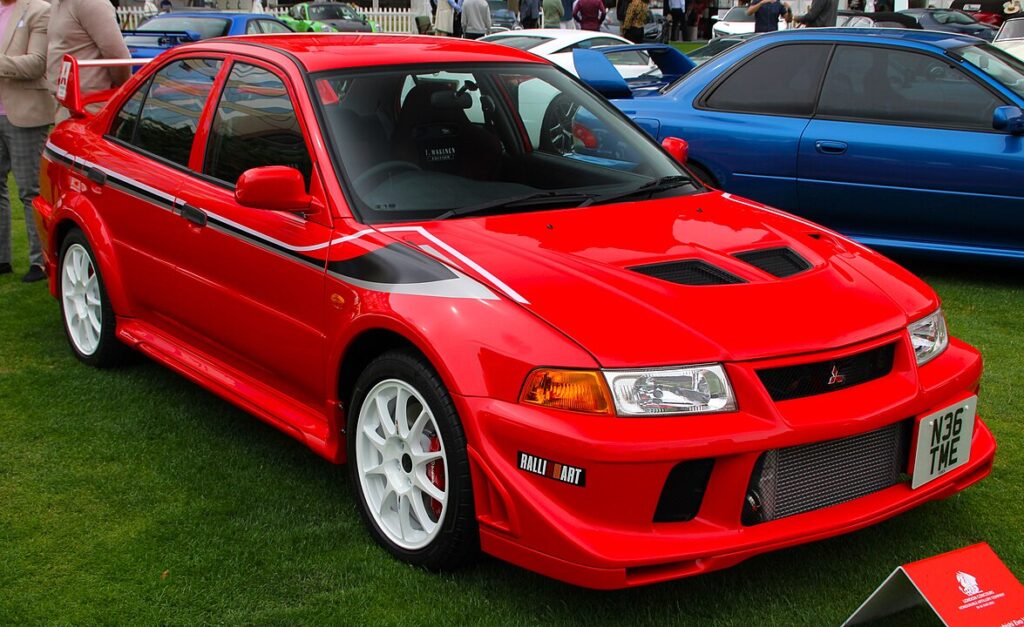
Ok ok, this one barely makes it into the 90s cars list, as it was released in 1999, but the Evo VI represents peak Mitsubishi – when they were truly competing at the highest levels of rallying with Tommi Mäkinen at the wheel. This generation perfected the formula with its 4G63 turbocharged engine, sophisticated all-wheel-drive system, and those aggressively functional looks.
The Tommi Mäkinen Edition, with its red/black color scheme and quick-spooling titanium turbo, is the holy grail version. What made the Evo special was how it democratized performance – it was essentially a rally car you could buy at your local dealer, for a reasonable price.
The rivalry with Subaru’s WRX STI created one of the greatest automotive battles of the decade, with fanboys on both sides still arguing about which is better (it’s the Evo, obviously). Inside was pure function over form – nothing fancy, just the essentials needed for driving fast. These cars were built to be driven hard, which makes finding an unmodified, unmolested example today almost impossible.
As Mitsubishi has moved away from performance cars, the Evo’s legacy only grows stronger.
8. BMW 850 CSi
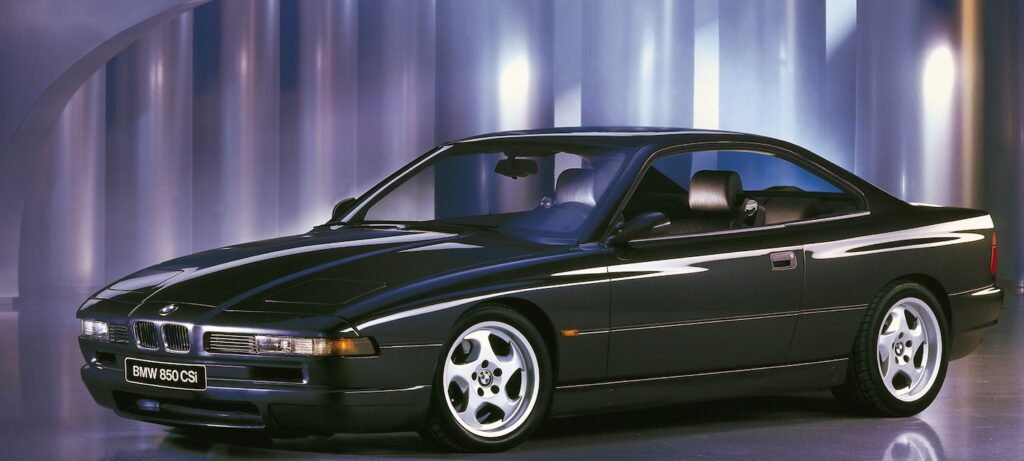
The 850 CSi was BMW’s moonshot – a technological showcase that cost absurd amounts to develop and was priced accordingly. That pillarless coupe design with pop-up headlights still looks spectacular today. Under the long hood was a 5.6-liter V12 that BMW essentially created by joining two straight-six engines together, producing 375 hp and a sound that’s pure automotive pornography.
The CSi version added M-division touches including a manual transmission (yes, a V12 with a stick shift!), which makes it the ultimate collector’s item today. Inside was a driver-focused cockpit with that characteristic BMW driver-oriented center console. It packed technology that was decades ahead of its time – electronic damper control, stability control, and an early form of drive-by-wire throttle.
Was it practical? Absolutely not. Was it reliable? God no. But it represented a time when BMW was willing to create something extraordinary regardless of the business case. Only about 1,500 CSi models were ever built, making it one of BMW’s rarest modern classics.
9. Mercedes-Benz S-Class (W140)
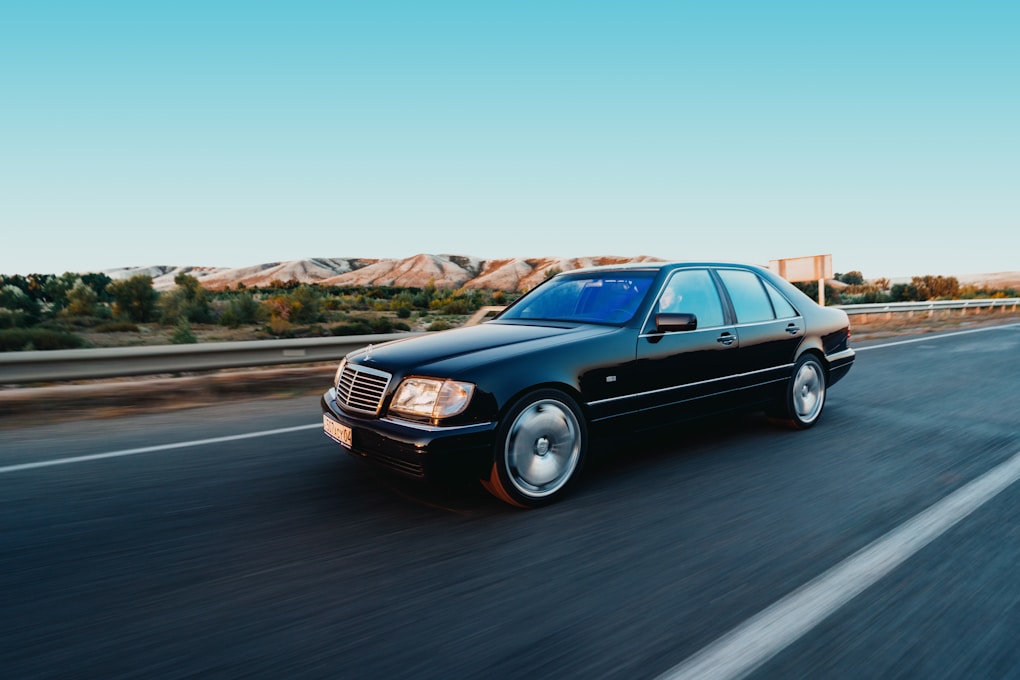
The W140 S-Class wasn’t just a car; it was a statement of engineering excellence. This was the last Mercedes developed with a “cost no object” philosophy, taking an extra few years to develop because engineers kept finding things to improve. The result was a tank-like luxury sedan with double-paned windows for ultimate quietness, self-closing doors, and an automatic extending antenna for better parking precision.
The V12 models were the first Mercedes twelves since the prewar era, offering effortless power and unmatched refinement. These cars were built with such precision and overengineering that many are still being used as daily drivers today with 300,000+ miles. The interior is a masterclass in ergonomics with perfect control placement and seats that remain comfortable after 10-hour drives. Yes, it was nicknamed “The Panzer” or “The Whale (in my country)” for its tank-like size and weight, but it moved with a grace that belied its dimensions.
This was Mercedes at its absolute peak – before the cost-cutting of the DaimlerChrysler era began. They literally don’t build them like this anymore.
10. McLaren F1
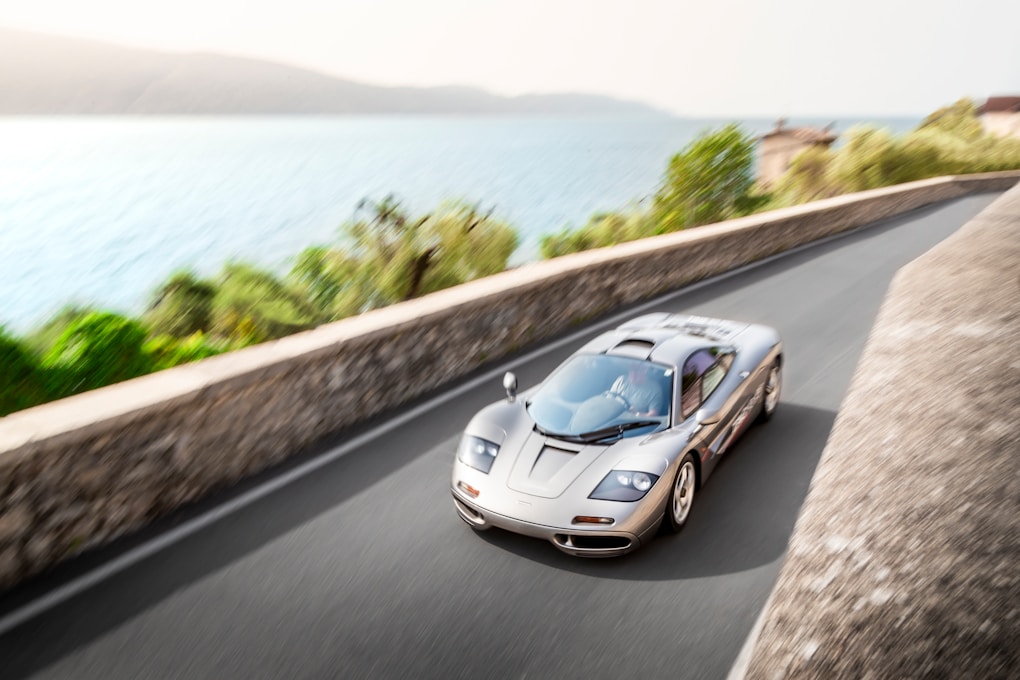
What can I say about the F1 that hasn’t already been said? It’s simply the greatest road car ever created. Gordon Murray’s masterpiece broke every convention – central driving position, gold-lined engine bay, BMW V12 that didn’t need catalytic converters, butterfly doors, carbon fiber everything before carbon was cool.
For over a decade, its 240+ mph top speed remained unbeaten. What makes the F1 special isn’t just the performance (though that’s extraordinary); it’s the obsessive attention to detail in every aspect. The custom-made titanium toolkit. The specially developed Kenwood stereo. The fact that Murray insisted on natural driving feedback with zero electronic aids. Each car took three months to build by hand, and only 106 were ever made.
The F1 wasn’t created to hit marketing targets or satisfy shareholders – it was pure engineering passion brought to life with zero compromises. At around $20 million today, it’s arguably still undervalued considering its significance. No modern hypercar, despite their superior numbers, comes close to capturing the F1’s purity of purpose.
11. Mazda MX-5 Miata
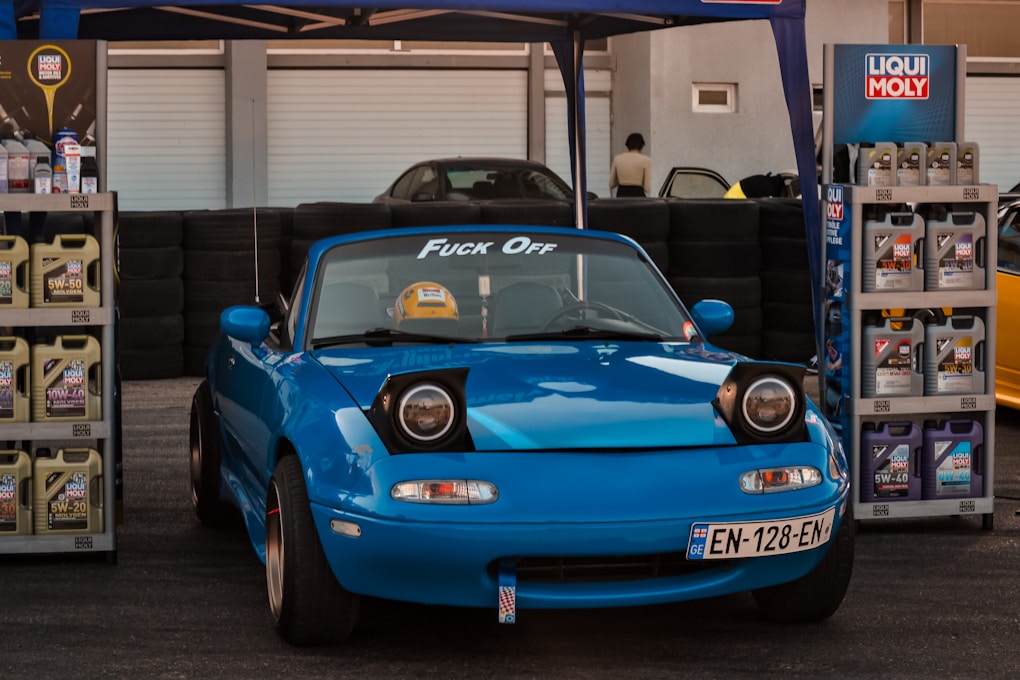
Not all great ’90s cars were exotic unobtanium. The Miata proved that automotive joy doesn’t require massive horsepower or a second mortgage. This little roadster single-handedly revived the affordable sports car market by channeling the spirit of classic British roadsters but with Japanese reliability.
The pop-up headlights, the perfect 50/50 weight distribution, that short-throw manual gearbox, and a naturally aspirated engine that begged to be revved – it was driving distilled to its purest form. What made the Miata magical wasn’t what it had, but what it didn’t have: unnecessary weight, complexity, or pretense. The simple soft top could be lowered with one hand in seconds. The interior was minimalist but perfectly arranged.
It wasn’t about straight-line speed; it was about the sensation of speed and connection to the road. Mazda’s “Jinba Ittai” philosophy – horse and rider as one – wasn’t marketing fluff; it was genuinely achieved in this car. The fact that first-gen Miatas are now legitimate collector cars speaks volumes about their cultural impact and timeless appeal.
12. Nissan 300ZX
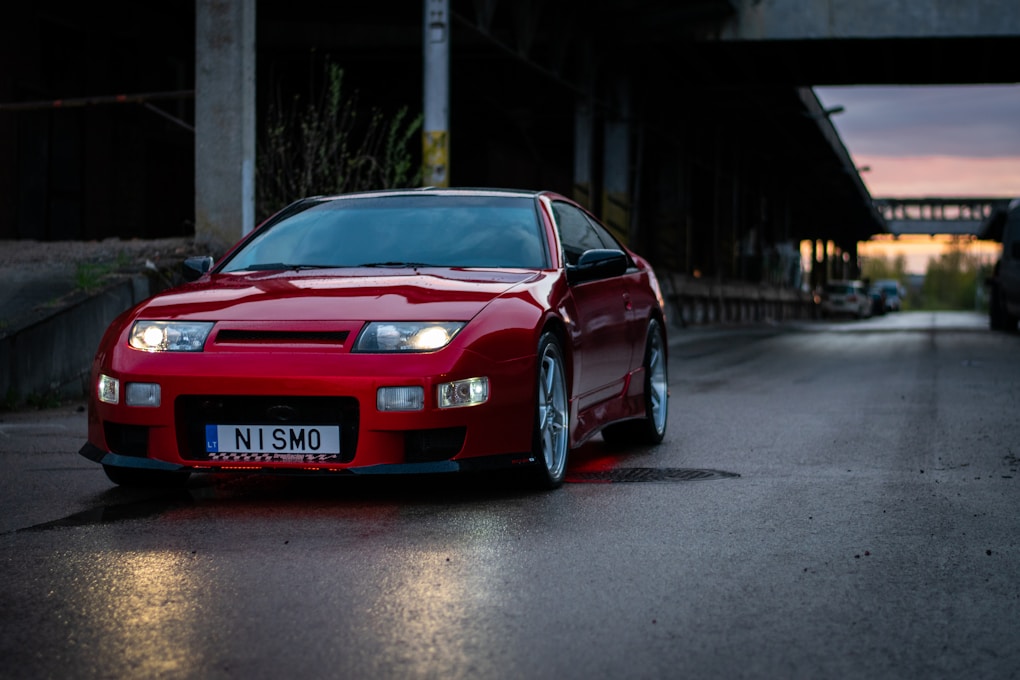
The Z32-generation 300ZX represented Japan at the absolute peak of its automotive confidence. This was Nissan flexing hard – a genuinely world-class sports car with cutting-edge technology and performance that embarrassed cars costing twice as much. The Twin Turbo version, with its 300 horsepower VG30DETT engine, was an absolute monster for its time, while the four-wheel steering system gave it handling capabilities few cars could match.
Stylistically, it was perfect – those slick lines haven’t aged a day, especially with the T-tops removed. The digital dash and cockpit-like interior made you feel like you were piloting something special. Sure, working on that cramped engine bay requires removing half the front end (and possibly sacrificing a finger or two), but that’s part of the charm.
The 300ZX was featured in one of the greatest car commercials ever – “Built for the Human Race” with GI Joe – cementing its cultural impact. Finding an unmodified, unmolested example today is nearly impossible, as these were tuner favorites. The 300ZX represented the pinnacle of the Japanese sports car golden age before the economic bubble burst.
13. BMW E36
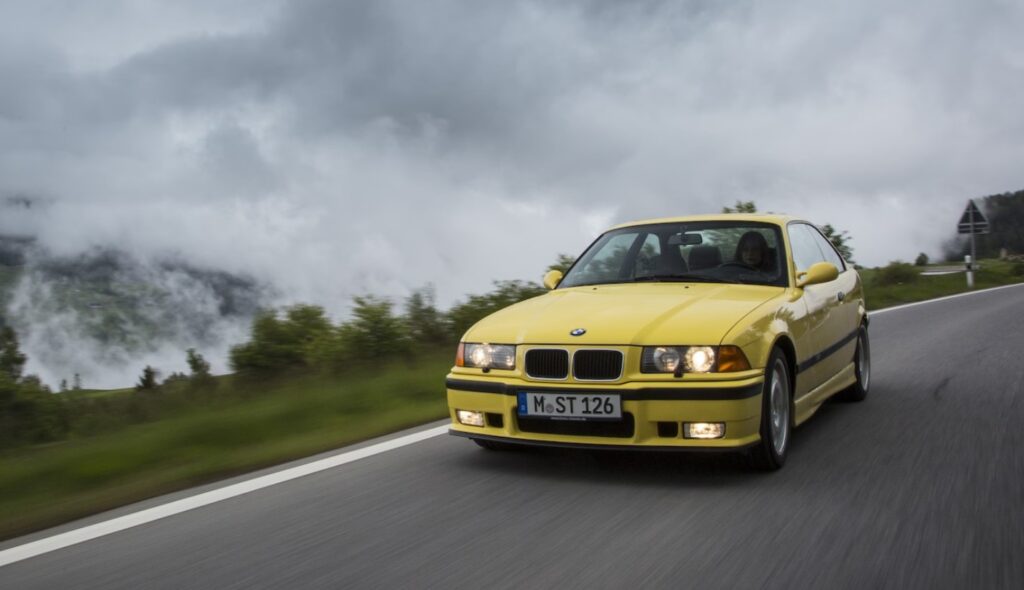
After the iconic E30, BMW had an impossible task with the E36 3-Series, but somehow they nailed it. More refined yet still driver-focused, the E36 represented BMW’s sweet spot – before their cars became too heavy and technology-laden.
The straight-six engines, particularly in the M3, were mechanical masterpieces with a sound that still gives enthusiasts goosebumps. While the US-spec M3 didn’t get the full-fat European engine (something BMW enthusiasts still complain about), it remained a phenomenal sports sedan with near-perfect weight distribution and that signature BMW handling precision. The interior was the perfect balance of driver-focused minimalism and premium materials – everything within easy reach, nothing superfluous.
These cars were built to be driven hard day after day without complaint. What makes the E36 special today is its analog nature – hydraulic steering with actual feedback, naturally aspirated engines, and a connection to the road that newer BMWs have lost in pursuit of comfort and technology.
As modern cars become increasingly isolated and digital, the honest, mechanical nature of the E36 becomes more appealing with each passing year.
14. Toyota Supra
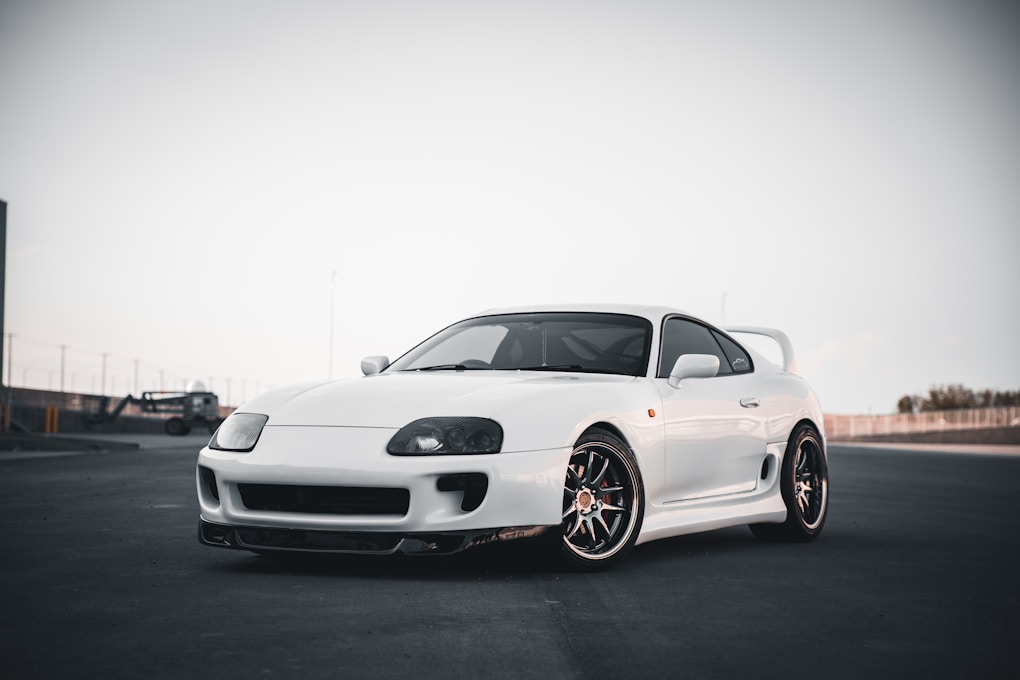
Even before The Fast and the Furious made it a household name, the Mk4 Supra was already legendary among car enthusiasts. Toyota overengineered this car to absurd levels – the 2JZ-GTE engine is famously capable of handling double or triple its stock horsepower rating without internal modifications.
The twin-turbo straight-six produced 320 hp from the factory, but that was just the starting point for many owners. The Supra’s styling was ahead of its time with that massive rear wing and curvaceous body that somehow still looks modern today. Inside was driver-focused with that wraparound cockpit and perfect gauge placement.
The Supra wasn’t just about straight-line speed though – it handled remarkably well for a relatively heavy GT car. What makes it truly special was its dual nature – comfortable grand tourer when you wanted it, tire-shredding monster when you needed it. Production ended in Japan in 2002, making the fourth-gen Supra the last of the truly iconic Japanese sports cars from the golden era.
Today, clean, stock examples are approaching six-figure prices – a testament to its legendary status and enduring appeal.
15. Jaguar XJ220
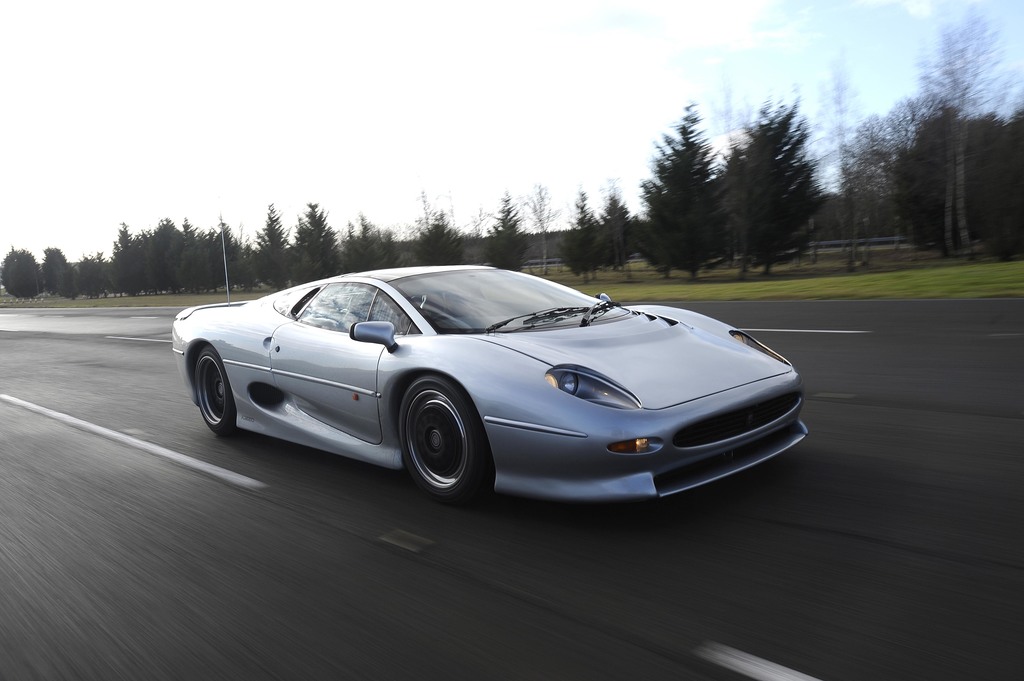
The XJ220 is the supercar equivalent of a rock star with a troubled past. What began as a V12-powered, all-wheel-drive concept ended up as a twin-turbo V6 with rear-wheel drive after Jaguar realized their original vision was too ambitious. Despite the controversial bait-and-switch, the XJ220 was briefly the fastest production car in the world at 213 mph.
Those impossibly sleek, wide proportions made it look like it was moving at 200 mph while standing still. The massive turbocharged V6 (derived from the Metro 6R4 rally car, of all things) produced a sound unlike anything else – part turbine, part race car, all drama. The cabin was surprisingly spartan for a Jag, with a focus on the business of high-speed travel rather than luxury.
Only 282 were built, and many were initially hard to sell due to the global recession and the engine controversy. But history has been kind to the XJ220 – it’s now recognized as the flawed masterpiece it always was.
It represented Jaguar at its most ambitious and daring, creating a true competitor to Ferrari and Lamborghini against all odds. Finding one today requires deep pockets and deeper patience, but owning a piece of Jaguar’s supercar legacy is surely worth it.
Sad to see the dramatic turn of events for Jaguar after their recent rebranding, I’m sure this will only make cars like the XJ220 even more expensive than it was before all the drama.
Which Is The Best Nineties Car In Your Opinion?
Alright, I know that there are many other cars that should be on this list, but these are just some of the ones I like from that era, of course I like many more, but wanted to keep this article short, maybe I’ll create a part two or update this later with more.
What do you think? Which one of these 90s cars is your favorite? And why is it the best in your opinion? Let me know down below.

